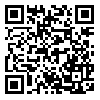Volume 18, Issue 4 (2018)
QJER 2018, 18(4): 1-30 |
Back to browse issues page
Download citation:
BibTeX | RIS | EndNote | Medlars | ProCite | Reference Manager | RefWorks
Send citation to:



BibTeX | RIS | EndNote | Medlars | ProCite | Reference Manager | RefWorks
Send citation to:
molabeigi J, Ebadi J, Amirzargar M A. Designing a Mechanism for an Efficient Kidney Transplant Market in Iran. QJER 2018; 18 (4) :1-30
URL: http://ecor.modares.ac.ir/article-18-15845-en.html
URL: http://ecor.modares.ac.ir/article-18-15845-en.html
1- Ph.D. of Economics, Mofid University,Qom, Iran , jalal_molabeigi@yahoo.com
2- Associate Professor of Economics, University of Tehran, Tehran
3- Professor of Orology, Hamedan University of Medical Sciences, Hamedan, Iran
2- Associate Professor of Economics, University of Tehran, Tehran
3- Professor of Orology, Hamedan University of Medical Sciences, Hamedan, Iran
Abstract: (8245 Views)
In the real world, dispersion of suppliers and demanders prevents market formation. Kidney market is a true example of such markets that is not formed due to thin features. To tackle the problem, one needs to design a mechanism that can both revive the market and ensure the most efficient supply-demand matching. A matching is efficient when no other matching can allocate agents to a better place, or cannot strongly allocate an agent to a better place. To this end, the mechanism should be designed to allocate agents to their highest preferences, so that agents cannot make another better choice. In this study, information on 20 patient-donor pairs was recorded at a clearing house in Hamedan province in 2016. After processing data, the patients’ preferences were ordered in terms of matching blood group, illness period, donor’s age, kinship relationship with donor, and gender of donor. Then, a mechanism was designed to match 17 patients with the most efficient kidneys. When patient ith matches donor ith and registers at the clearing house, the mechanism can offer her/his the most efficient kidney. If a given patient finds a donor better than his/her peer donor, then he/she will leave his/her peer donor. Otherwise, he/she matches her paired donor.
Article Type: Research Paper |
Subject:
Economics
Received: 2017/04/4 | Accepted: 2018/12/16 | Published: 2018/12/16
Received: 2017/04/4 | Accepted: 2018/12/16 | Published: 2018/12/16
Send email to the article author
| Rights and permissions | |
 |
This work is licensed under a Creative Commons Attribution-NonCommercial 4.0 International License. |







